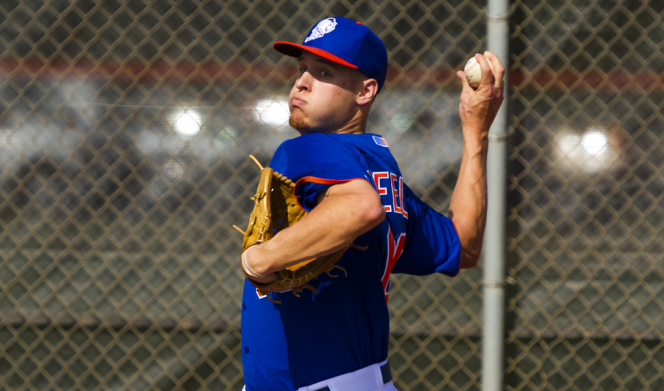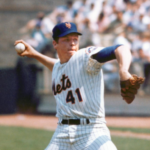As Zack Wheeler heads to minor league camp and begins to focus on what he needs to do to ready himself for a potential major league debut later this season with the Mets, let’s consider some of what we did get to see and hear while he was in Mets camp.
Wheeler gave a concise self-assessment of his repertoire not too long ago during an interview with WFAN’s Mike Francesa:
“I like to come at you with a fastball, not afraid to come inside. I am aggressive, I got a sharp slider, good curveball that I can strike you out with, or get over early for a strike. Changeup is a work in progress.“
Most scouts, and those who have seen him, all agree that Wheeler’s number one issue is gaining a better command of his primary pitches while continuing to develop his secondary offerings, particularly his curveball and changeup.
There’s no questioning Wheeler’s confidence and determination and in that regard, he is like fellow teammate Matt Harvey. They both seem to share that bulldog mentality.
I thought I’d ask our MMO minor league guru, Mitch Petanick, to share some thoughts on Wheeler and provide us with some additional analysis.
Thoughts From Mitch
What can be said about Wheeler that hasn’t been said before? His fastball is dynamite. His two-seamer has wicked movement which moves in on the right-handed hitters hands, and away from left-handed hitters. Wheeler states that he likes to pitch inside, and if the two seam is used effectively on the inside half to righties, opposing hitters will be going through a ton of lumber. In the video shown below it gives a great view of Wheeler’s pitches from behind the plate, and you can really see the filthy movement on all of his pitches.
Wheeler’s curveball is also very sharp and considered a biting curveball. His changeup is still a work in progress, as he states in the quote, but the changeup is not an easy pitch to master. If he’s throwing a circle change, the grip on the ball is awkward for pitchers to get used to. The thumb, which is usually there as a guide, is now on the side of the ball, instead of under it. The pitcher basically makes the O.K. sign with their fingers, and then grip the ball with the middle and ring finger placed on the two seams of the baseball. It is then thrown like a fastball, and due to the grip, the baseball does not generate as much velocity as the fastball.
The batter perceives the pitch to be a fastball because the arm speed of the pitcher does not change, but the velocity of the ball drops by about 10 mph due to the grip. The pitcher releases the ball and lets the ball come out of the hand off the middle, ring, and pinky in a fashion that the ball rotates and creates a motion, from a right-handed pitcher like Wheeler is, that will move in and down on right-handed hitters. Grip a ball making an O.K. sign with your hand and throw it as hard as you can and you will see how hard the pitch is to control and master.
Wheeler’s changeup may still need some work, but it will be effective. Anytime you throw in the upper 90s, the speed drop off from throwing a changeup will be enough to confuse hitters and keep them off-balance, as long as he can throw it for strikes. Wheeler is all but ready to embark on what hopes to be a long and exciting career in a Mets uniform. The fans are patiently awaiting his arrival.
















